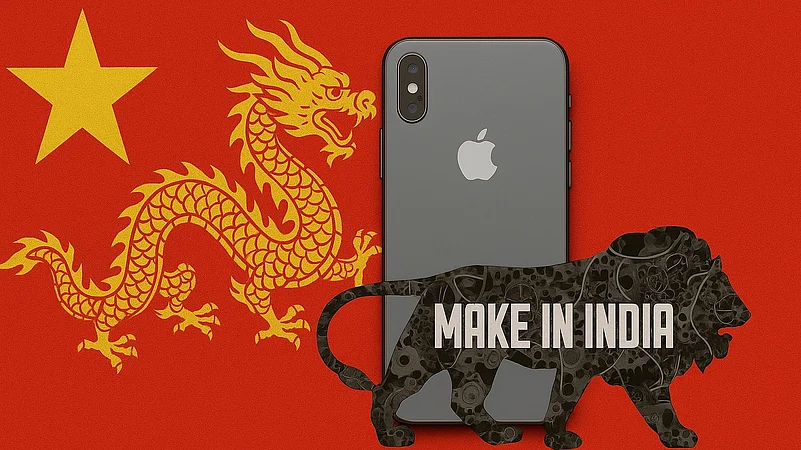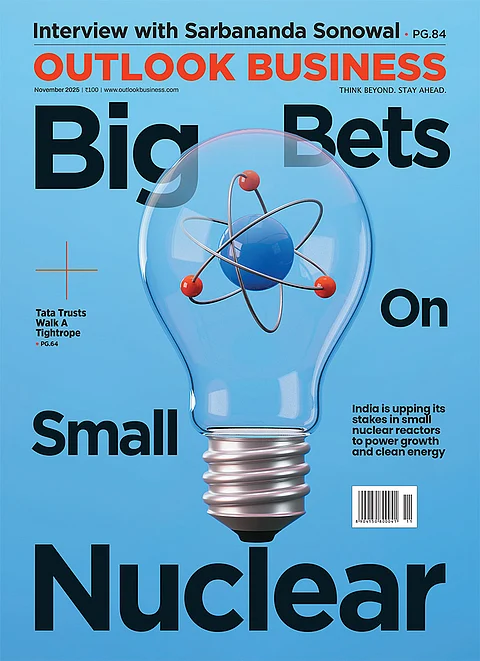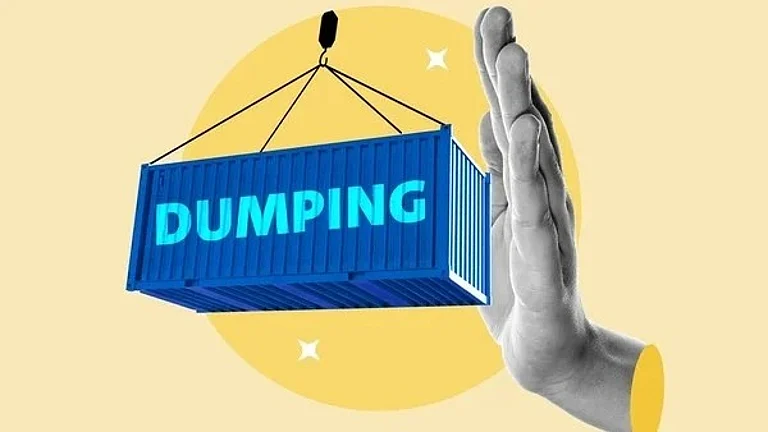“China stopped being the low labour cost country many years ago. The reason is because of the quantity of skill in one location and the type of skill it is. The tooling skill is very deep here. In the US, you could have a meeting of tooling engineers and I'm not sure we could fill the room. In China, you could fill multiple football fields."
Tech giant, Apple’s chief executive Tim Cook's 2017 remarks still reverberate globally, as the iPhone supply chain remains a focal point for politicians and policymakers. This time, Apple’s reliance on its Chinese workforce appears to be affecting India. Reports suggest that Hon Hai Technology Group, a Taiwanese multinational electronics manufacturer better known as Foxconn, has sent hundreds of its Chinese technicians and engineers back home. The move has reignited debate over how dependent Foxconn and Apple’s other suppliers remain on China—and whether the latest move could hinder India’s manufacturing ambitions.
According to analysts, there is “little cause for concern” for now, as Chinese talent is being replaced by engineers from Taiwan. However, they note that Indian manufacturing facilities still rely heavily on China for raw materials and supply chain processes.
What Happened at Foxconn
On July 2, Bloomberg reported that over 300 Chinese workers had left Foxconn’s iPhone assembly plants in Sriperumbudur (Tamil Nadu) and Devanahalli (near Bengaluru, Karnataka) over the past six months—potentially due to a new policy by the Chinese government.
The news agency had earlier reported that the Xi Jinping-led government had verbally encouraged regulatory agencies and local bodies to restrict technology transfers and equipment exports to overseas markets. The move is primarily aimed at strengthening domestic production and preventing capital flight in the event that the US, under a potential Trump administration, imposes fresh trade barriers.
On July 9, Mint reported that over 100 key Chinese tech leaders were recalled from Foxconn’s India unit, registered as Bharat FIH. These personnel were primarily from its subsidiary, Rising Stars Hi-Tech. Citing internal business sources, the report said the move may not cause immediate disruption to Apple or Foxconn’s assembly lines.
The report also included the Indian government's response, which described the move as part of a “significant geographical shift of an established supply chain” and “some amount of disruption and adjustments that happen as part of the technology transfer process.”
Officials emphasised that replacements from the US, Taiwan and Vietnam are already in place.
However, the move comes at a time when Apple has reportedly pushed its Indian suppliers—particularly Foxconn and Tata Electronics—to ramp up production in India. Foxconn is also building a display-module assembly unit and the country’s first iPhone enclosure factory in Chennai’s ESR Industrial Park.
Why Foxconn Relies on China
Established in Taiwan in 1974, Hon Hai Technology Group is the world’s largest electronics manufacturing service provider. Last year, the company reported consolidated revenue of NT$6.8trn (approximately $211bn), marking an 11.3% increase from the previous year. This growth, according to its annual report, was primarily driven by booming AI-related demand, rapid expansion of the cloud network industry and a recovery in both the automotive electronics and semiconductor sectors.
In 2024, 30% of the company’s revenue came from cloud and networking products, while 46% came from smart consumer electronics—a large portion of which was driven by Foxconn's 1999 contract with Apple to manufacture iPhones and other devices.
Every year, Apple publishes a comprehensive list of its suppliers. The 2023 list includes over 300 global companies spanning mainland China, Taiwan, Japan, South Korea, the US, Vietnam, Thailand, Singapore, Belgium and more.
Foxconn has been Apple’s main supplier since the company began moving parts of its supply chain outside China in the early 2000s. A 2024 research paper by Desty Maharani and Tirta Nugraha Mursitama from Bina Nusantara University, Jakarta, Indonesia, captures this well: "As a company that acquires electronic products that continue to grow every day, Apple needs its supply chain to optimise the margins that it earns through production. For this reason, Apple needs major suppliers to increase output and meet customer demand continuously. To increase its competitiveness, Apple made Foxconn its main producer... so Foxconn has expanded in several Chinese regions: Guanlan, Longhua and Chengdu."
Foxconn operates four major facilities in China: Yantai Technology Park (Shandong), Zhengzhou Technology Park (Henan), Chengdu Technology Park (Sichuan) and Longhua Technology Park (Shenzhen).
Foxconn’s Zhengzhou facility—often called “iPhone City”—spans 5.6 square km and reportedly produces 70–80% of all iPhones globally. Even as Apple and Foxconn have attempted to diversify away from China since 2017—when the US President Donald Trump first raised threats of trade barriers—this plant remains critical. At its peak capacity, it employs between 200,000 and 350,000 workers. In 2024, ahead of the iPhone 16 launch, the plant scaled up by hiring over 50,000 workers in just two weeks.
Since 2017, Foxconn has set up at least eight major manufacturing facilities outside China, including large investments in India, expansions in Vietnam and Malaysia and two major projects in the US. In India, Foxconn has ramped up iPhone assembly in Sriperumbudur and built a large campus in Devanahalli. Additional facilities include a display module and enclosure plant under construction in Chennai and an electronics unit in Kongara Kalan, Telangana.
In Vietnam, Foxconn has expanded operations in Bac Ninh and Bac Giang, where it manufactures smartphones, printed circuit boards (PCBs) and telecom equipment. In Malaysia, the company is developing a semiconductor wafer fabrication plant in Kulim for electric vehicles (EVs) through a joint venture with DNeX, a Malaysian investment holding company. In the US, Foxconn launched a high-profile but evolving project in Mount Pleasant, Wisconsin and acquired a GM plant in Lordstown, Ohio, to produce EVs.
“From what I’ve seen in the industry, when a company moves production to countries like Vietnam or India, they usually bring in Chinese engineers at the start. These engineers help with training, setting up machines and ensuring the process runs as it does in China,” said Hommer Zhao, sales and marketing director at OurPCB, a Chinese electronics manufacturing Service provider. “Without that help, it can take much longer to get a new factory operating at full speed.”
Zhao added, “It’s not just about machines, it’s also about experience. You can buy the tools but you still need the right people to run them well. This could slow down production and make it harder for Apple to meet deadlines.”
“During the process of setting up facilities in India and Vietnam, original design manufacturers still rely heavily on the support of China’s supply chain,” said Ben Yeh, principal analyst at Canalys, a global technology market analyst firm.
“Of course, in the long run, they aim to train enough local engineers to meet on-site needs, reducing costs and barriers related to travel, accommodation and cultural adaptation. They will also encourage PCB suppliers and other vendors to relocate or partner locally.”
Yeh added that China and India or China and Vietnam “are not yet in a position to fully decouple in terms of technology and talent.”
However, on the specific case of Foxconn sending Chinese engineers back from India, he noted:
“If Chinese engineers are unable to travel to its Indian plants, Foxconn has the flexibility to send Taiwanese engineers from its Chinese sites. They are actively working on such arrangements, so there is little cause for concern.”
What it Means for Apple's India Plans
Earlier this year, Bloomberg reported that Apple assembled about $22bn worth of iPhones in India in the 12 months ending March 2025—a nearly 60% increase year-over-year. Citing sources, it was reported that the American tech giant now aims to “roughly double its annual iPhone output in India to more than 80mn units” by the end of 2026.
This comes amid threats by the US President Donald Trump of massive retaliatory tariffs—especially targeting China—at one point rising into triple digits.
In April, Reuters claimed Apple is in “urgent talks” with Foxconn and Tata to shift the vast majority of its US-destined iPhones to India by end of 2026. Currently, about 80% of the 60mn US iPhones are made in China. Even as Trump has reportedly warned Apple chief executive Cook of fresh levies, the company is pressing forward with its India plans.
India’s smartphone exports reached $24.1bn in the financial year 2025, up 55% from 2024. According to a Business Standard report, 26% of smartphones sold in the US during Q1 2025 were from India, a significant jump from 16% last year. Notably, India’s share in US smartphone imports surged from 2% in 2022 to 14% in 2024 and 37% in the first four months of 2025.'
“They (Indian iPhone makers) are still heavily tied to China for raw materials and supply chain processes. This is a journey, but China remains foundational. China will resist these shifts and for Foxconn and Apple, this is a delicate balance,” said Dan Ives, global head of tech research and managing director at Wedbush Securities, a California based investment firm. “It’s a very arduous process to move away from China.”
































